New-Age Technologies in Workforce Planning & Recruitment: Strategic Analysis of Emerging Trends
In 1979, Francis Crick, famous for his work on DNA, wrote an interesting essay. Crick said, “despite the steady accumulation of detailed knowledge, how the human brain works is still a mystery” This was from his famous work “Thinking about the Brain.” Human Potential is simply unstoppable and expands continuously. We are experiencing a phenomenon that Peter Diamandis calls “Dematerialization,” or an age in which physical products are made obsolete as Software absorbs their capabilities. Recent examples like Cameras, Maps, Camcorders, and GPS systems. This effect is what Marc Andreessen of Andreessen Horowitz famously quoted 13 years ago “Software is eating the world.”
The next few years are about to get super exciting for Workforce Planners and Recruiters. Here are some significant trends to consider and evaluate. We hope these trends will help in your thinking.
1.0 AI is eating Software: The role of AI has become critical in personalization, Predictive maintenance, Cognitive Analytics, Chatbots, Digital assistants, etc. But let us look at AI as Andrew NG defines it. NG considers AI systems as providing two sources of Knowledge
- When we have a lot of data, AI will rely more on the large datasets
- When there is little data, you need to rely heavily on human Knowledge and develop the datasets leveraging the human experience
Many organizations suffer from the second component where there is not enough data in the insights they are seeking. This data availability is one reason why it is taking a lot to automate components like Financial advice or legal advice.
It is essential to create ML Data Annotation – center of excellence within the company from a labor perspective. It is a simple role but can build steep intelligence for the companies. For example, you could ask the data annotation team to label all historical performance reviews with each BU unit’s success or failures. You could ask the Data Annotators to Label specific inputs that your Chatbot cannot understand in your employee support lines. The possibilities are limitless, and this will become a substantial intellectual Property for each enterprise
2.0 Robotic Process Automation (RPA) is increasing AI power: A silent revolution within RPA and labor market strategists need to consider incorporating it in their workforce models. One can view RPA as a logic layer that can deeply contextualize what your end customer needs to do. Imagine you are using Chatbot to engage with a new hire. While the AI in Chatbot can engage with the candidate through NLP (Natural Language Programming), RPA can stage the correct forms for onboarding and do all the business logic work. This technology is therefore vital in workforce planning
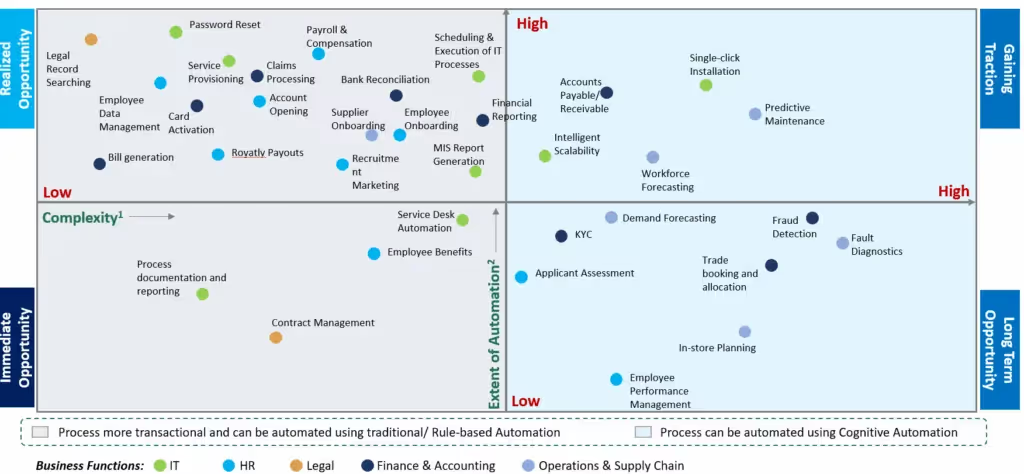
3.0 Convergence of IT and Software is happening at a Rapid Pace: This concept is not well understood. Post Cloud migrations, there is more synergy between IT and Software development. We conducted one study looking at the transition of IT to software profiles. Several mid-career IT engineers are transitioning into Software Engineers. This transition has a phenomenal impact on both Workforce Planners and Pipeline opportunities for Recruiters
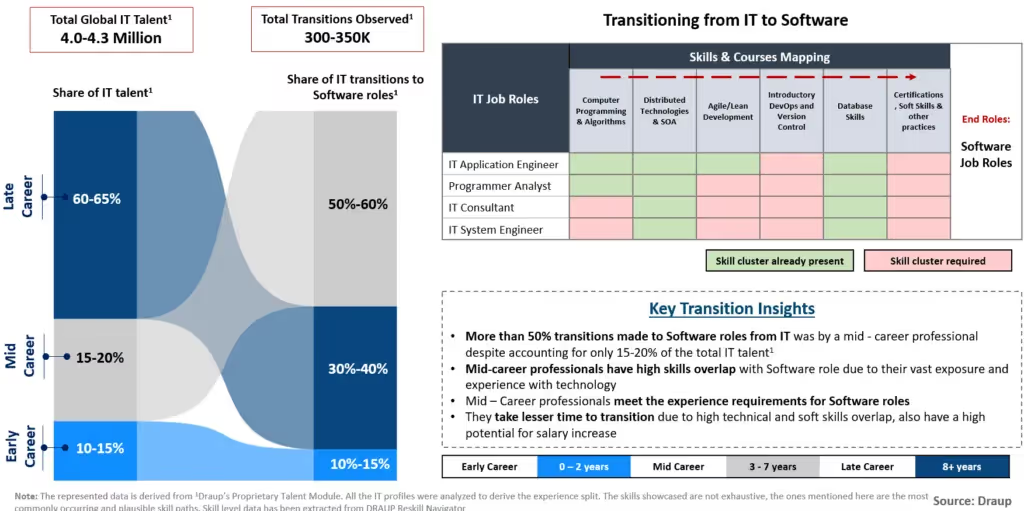
4.0 Metaverse; Establishing an Equitable enterprise: Metaverse offers a vast opportunity to expand talent boundaries. From a hybrid work standpoint, the location of the remote workers simply becomes a Digital Twin to the Corporate Headquarters. The team meeting will be joining with 3D-enabled digital avatars. This way of working has far-reaching contexts around empathy. As people join in, you will know your colleague’s remote location’s temperature and expected climatic events in the near future. (example) This type of understanding can mean your workforce can be diverse. We developed a simple table to emphasize the possibility with Ageing workforce and their return to Metaverse
How can Ageing talent categories contribute in Metaverse? Physical Distance Bias will be eliminated. The Knowledge from diverse workforce segments can be seamlessly integrated into discussions and any product development (especially in the instances of limited data – rely on human intuitions).
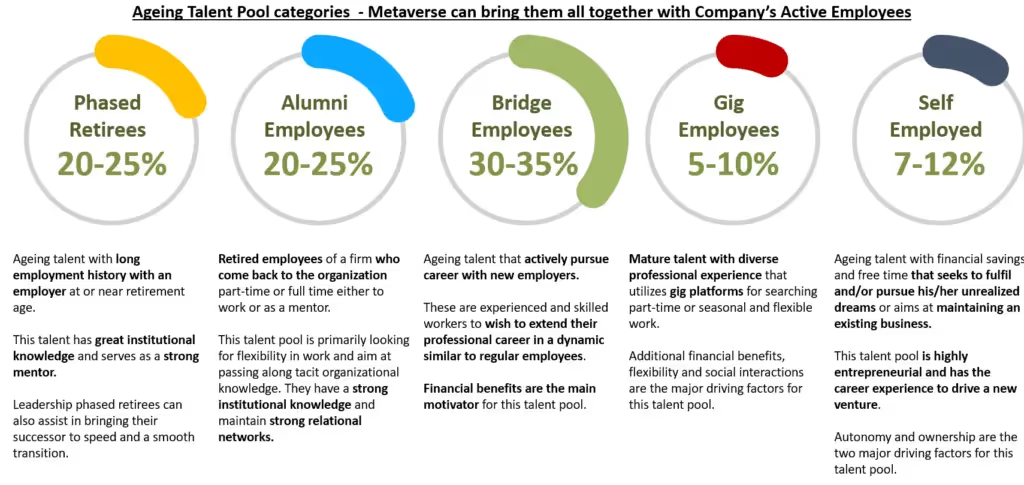
5.0 Board Seat for Recruiters and Workforce Planners: Post the pandemic, the board demands more talent data and asks probing questions. Cyber security threats, geo-political issues, diversity trends, Digital acceleration, and hybrid work require the right talent in suitable locations. Draup predicts that the board members will increasingly require the presence of workforce planners and recruiters to hear ground-level insights and challenges. Staffing in these functions will uniquely help companies. Different points of view may emerge about an existing location or a new location. Take Kenya, for example; from outside, one may not expect that the country is an inward immigration hub, but a closer look will tell that knowledge workers from places like Congo, Sudan, and Ethiopia move into Kenya.
Recruitment, therefore, requires deeper analysis and insights and will be a unique competitive advantage
Overall, we are pretty excited about HR’s role under emerging circumstances. If we plan the initiatives correctly, we can accelerate transformation and adaptation and make the enterprises genuinely care for a great workplace. Thanks again for reading. Please stay safe, and we will be back next week with more insights.
1.0 AI is eating Software
The role of AI has become critical in personalization, Predictive maintenance, Cognitive Analytics, Chatbots, Digital assistants, etc. But let us look at AI as Andrew NG defines it. NG considers AI systems as providing two sources of Knowledge
- When we have a lot of data, AI will rely more on the large datasets
- When there is little data, you need to rely heavily on human Knowledge and develop the datasets leveraging the human experience
Many organizations suffer from the second component where there is not enough data in the insights they are seeking. This data availability is one reason why it is taking a lot to automate components like Financial advice or legal advice
It is essential to create ML Data Annotation – center of excellence within the company from a labor perspective. It is a simple role but can build steep intelligence for the companies. For example, you could ask the data annotation team to label all historical performance reviews with each BU unit’s success or failures. You could ask the Data Annotators to Label specific inputs that your Chatbot cannot understand in your employee support lines. The possibilities are limitless, and this will become a substantial intellectual Property for each enterprise.
2.0 Robotic Process Automation (RPA) is increasing AI power
A silent revolution within RPA and labor market strategists need to consider incorporating it in their workforce models. One can view RPA as a logic layer that can deeply contextualize what your end customer needs to do. Imagine you are using Chatbot to engage with a new hire. While the AI in Chatbot can engage with the candidate through NLP (Natural Language Programming), RPA can stage the correct forms for onboarding and do all the business logic work. This technology is therefore vital in workforce planning
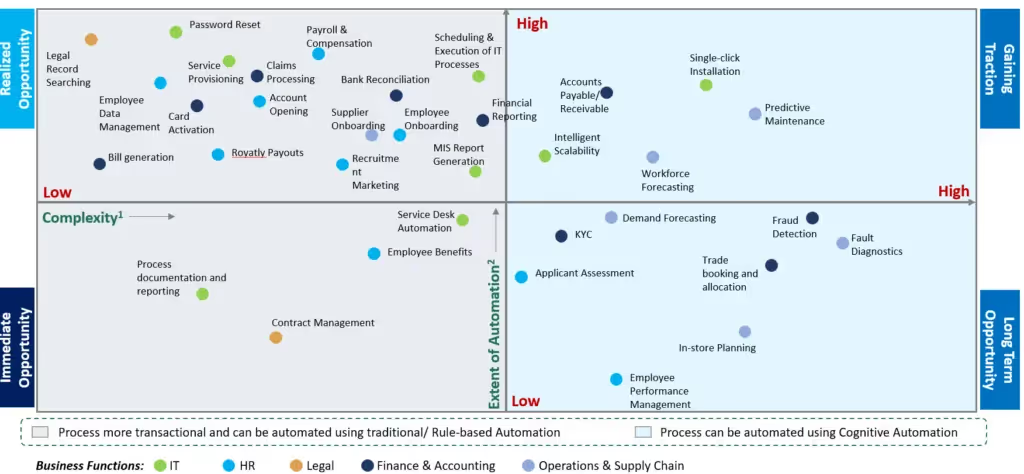
3.0 Convergence of IT and Software is happening at a Rapid Pace
This concept is not well understood. Post Cloud migrations, there is more synergy between IT and Software development. We conducted one study looking at the transition of IT to software profiles. Several mid-career IT engineers are transitioning into Software Engineers. This transition has a phenomenal impact on both Workforce Planners and Pipeline opportunities for Recruiters.
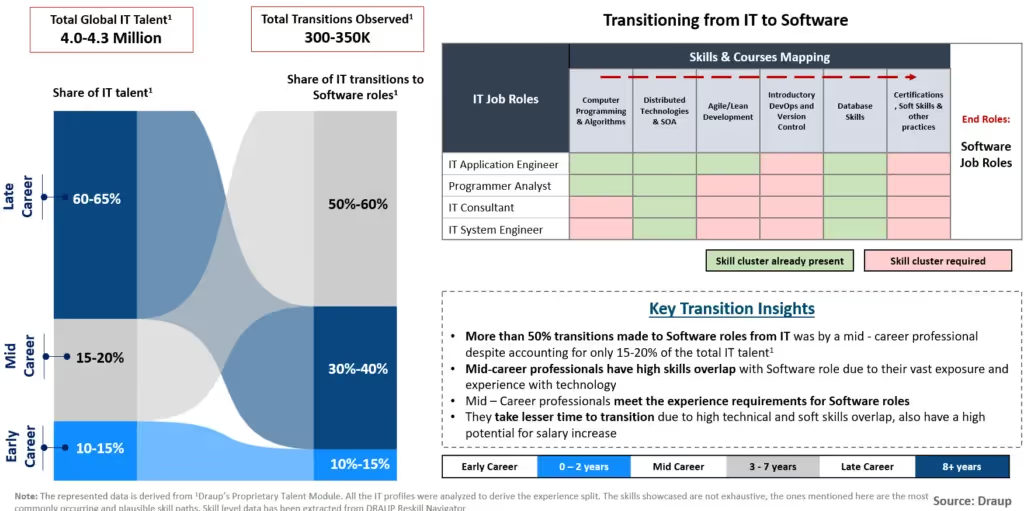
4.0 Metaverse; Establishing an Equitable enterprise
Metaverse offers a vast opportunity to expand talent boundaries. From a hybrid work standpoint, the location of the remote workers simply becomes a Digital Twin to the Corporate Headquarters. The team meeting will be joining with 3D-enabled digital avatars. This way of working has far-reaching contexts around empathy. As people join in, you will know your colleague’s remote location’s temperature and expected climatic events in the near future. (example) This type of understanding can mean your workforce can be diverse. We developed a simple table to emphasize the possibility with Ageing workforce and their return to Metaverse
How can Ageing talent categories contribute in Metaverse? Physical Distance Bias will be eliminated. The Knowledge from diverse workforce segments can be seamlessly integrated into discussions and any product development (especially in the instances of limited data – rely on human intuitions).
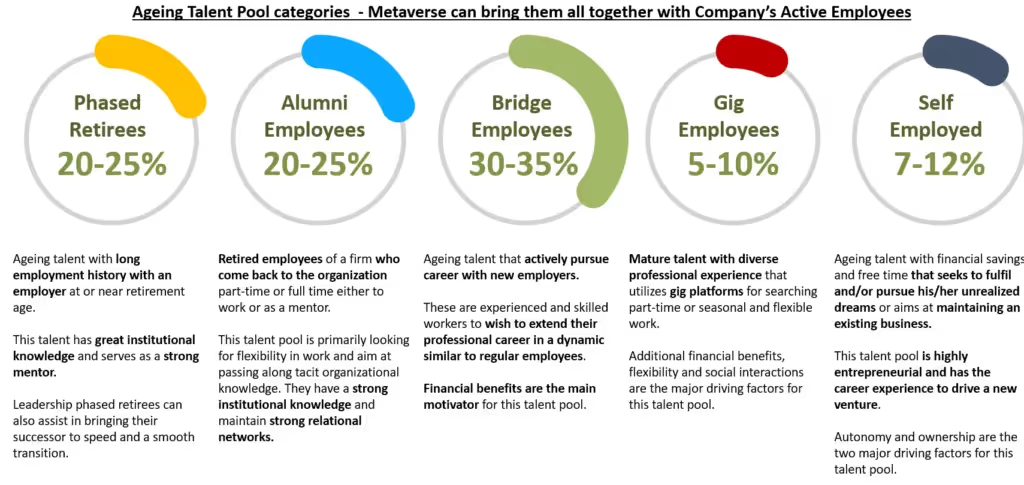
5.0 Board Seat for Recruiters and Workforce Planners
Post the pandemic, the board demands more talent data and asks probing questions. Cyber security threats, geo-political issues, diversity trends, Digital acceleration, and hybrid work require the right talent in suitable locations. Draup predicts that the board members will increasingly require the presence of workforce planners and recruiters to hear ground-level insights and challenges. Staffing in these functions will uniquely help companies. Different points of view may emerge about an existing location or a new location. Take Kenya, for example; from outside, one may not expect that the country is an inward immigration hub, but a closer look will tell that knowledge workers from places like Congo, Sudan, and Ethiopia move into Kenya.
Recruitment, therefore, requires deeper analysis and insights and will be a unique competitive advantage.










.svg)




















.svg)





.svg)
